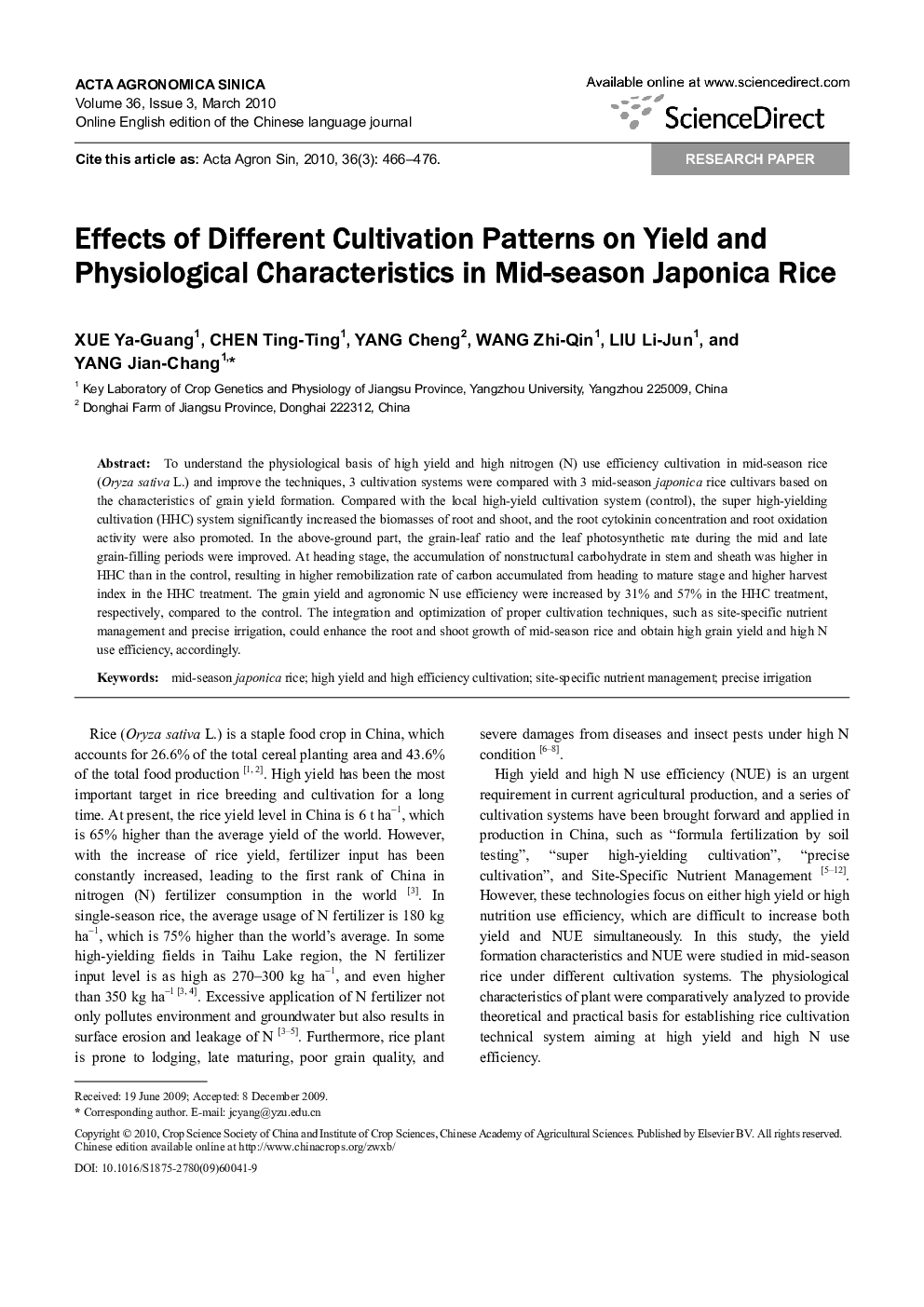| Article ID | Journal | Published Year | Pages | File Type |
|---|---|---|---|---|
| 4503273 | Acta Agronomica Sinica | 2010 | 11 Pages |
To understand the physiological basis of high yield and high nitrogen (N) use efficiency cultivation in mid-season rice (Oryza sativa L.) and improve the techniques, 3 cultivation systems were compared with 3 mid-season japonica rice cultivars based on the characteristics of grain yield formation. Compared with the local high-yield cultivation system (control), the super high-yielding cultivation (HHC) system significantly increased the biomasses of root and shoot, and the root cytokinin concentration and root oxidation activity were also promoted. In the above-ground part, the grain-leaf ratio and the leaf photosynthetic rate during the mid and late grain-filling periods were improved. At heading stage, the accumulation of nonstructural carbohydrate in stem and sheath was higher in HHC than in the control, resulting in higher remobilization rate of carbon accumulated from heading to mature stage and higher harvest index in the HHC treatment. The grain yield and agronomic N use efficiency were increased by 31% and 57% in the HHC treatment, respectively, compared to the control. The integration and optimization of proper cultivation techniques, such as site-specific nutrient management and precise irrigation, could enhance the root and shoot growth of mid-season rice and obtain high grain yield and high N use efficiency, accordingly.
摘 要本研究旨在探讨水稻高产与氮肥高效利用的栽培技术。用中粳稻品种进行当地高产栽培(对照)、超高产栽培和高产高效栽培等处理, 比较分析在不同栽培技术体系下产量形成特点及其生理原因。与对照相比, 高产高效栽培增加了根和地上部植株干重、提高了根系细胞分裂素含量、根系氧化力、粒叶比、灌浆中后期叶片光合速率、抽穗期茎鞘中非结构性碳水化合物累积量、物质运转率和收获指数; 产量增加31%, 氮肥农学利用率(单位施氮量增加的产量)增加57%。说明通过栽培技术的集成优化, 可以促进植株生长, 进而获得高产和氮肥高效利用的效果。
